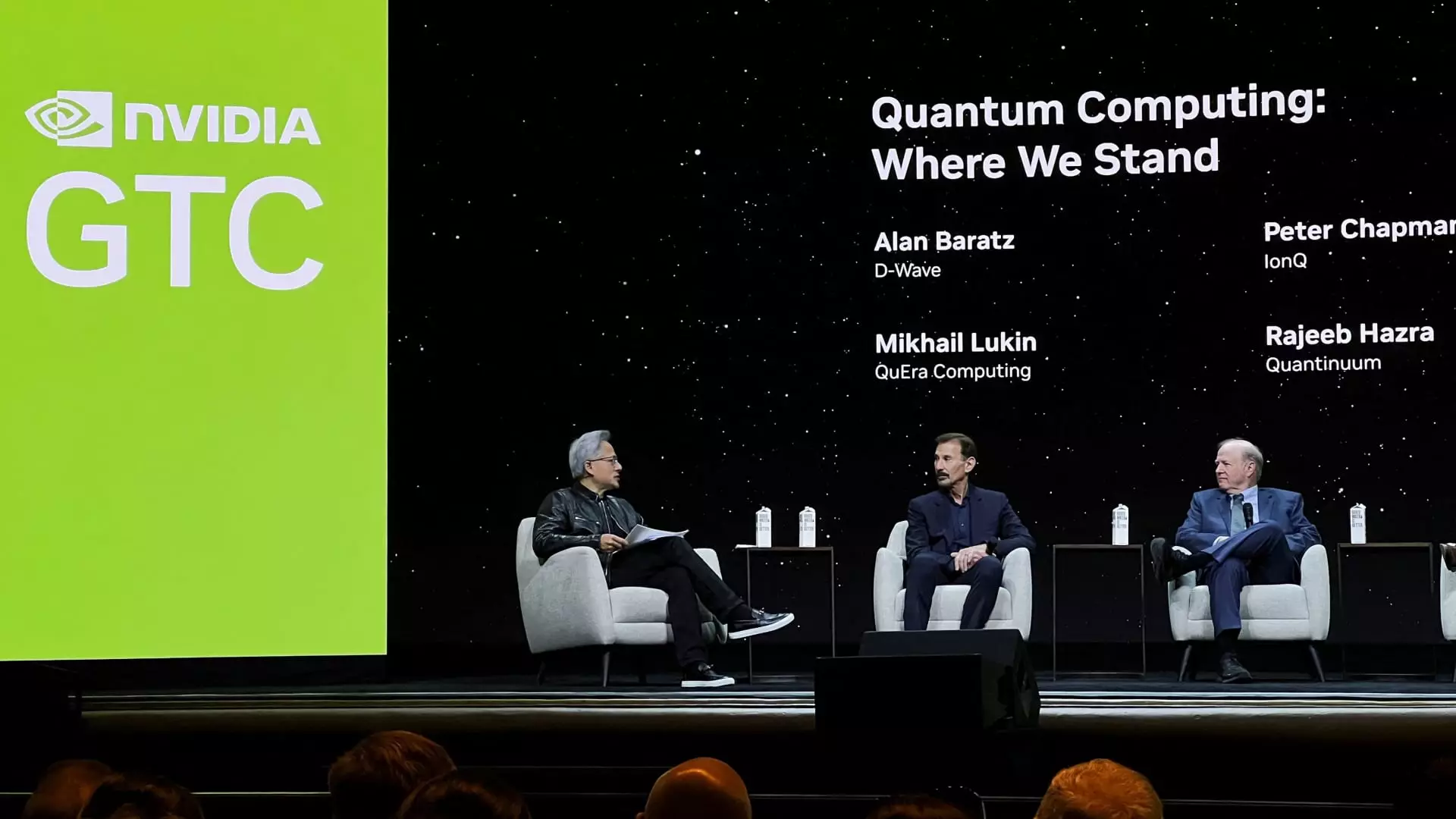In the rapidly evolving world of technology, there’s a continual tug-of-war between hype and reality. Jensen Huang, the charismatic CEO of Nvidia, attempted to navigate this landscape during his address at the company’s inaugural “Quantum Day.” Finding himself in the daunting position of correcting previously optimistic projections about the timeline for quantum computing, Huang’s attempt to recalibrate expectations ended up highlighting a critical issue: the over-abundance of hope surrounding quantum technologies is not only premature; it’s potentially reckless. The subsequent tumult among quantum-related stocks only emphasizes this dissonance between rhetoric and reality.
The Quantum Illusion: A Delicate Balancing Act
Huang’s earlier comments suggested that meaningful utility from quantum computing could emerge within a mere 15 years. The initial euphoria sparked a rally in quantum stocks, creating an illusion of imminent breakthroughs. However, his latest statements, which sought to temper this optimism by implying a more realistic timeline closer to 20 years, were seen as a stark admission of uncertainty. The drop in stocks such as D-Wave, which plummeted by 18%, reveals a troubling trend in investor sentiment: a growing realization that the technology may be years away from realizing its promised potential.
Critics argue that Huang’s efforts to frame quantum computing as a complementary tool to classical systems—as opposed to a revolutionary replacement—may misguide potential investors. This argument raises important questions about the identity and branding of quantum computing. After all, in an era where disruption is the ultimate goal for technology companies, merely presenting quantum systems as auxiliary devices may lead investors to reconsider the divisions between ambition and feasibility.
The Risks of Overhyping: Market Reaction
Market reactions often reflect deeper anxieties swirling around the tech industry, particularly when it comes to burgeoning fields like quantum computing. Huang’s admission of potentially framing quantum computing incorrectly didn’t settle the waters; instead, it exacerbated underlying skepticism. The fact that stocks for companies, even those sharing the stage with Huang, fell sharply after his remarks demonstrates a waning trust in not just quantum technology but also its prospects for profitability.
Investors are not merely betting on the technology itself but are increasingly scrutinizing the management behind these innovations. When a leading figure like Huang admits to having miscalculated timelines, it puts a spotlight on transparency—or the lack thereof—within the industry. If a tech titan struggles to convey an accurate timeline for a groundbreaking innovation, what does that say about the other players in the field?
The Financial Paradox: Investment versus Realism
The paradox is glaring: on one hand, enormous sums are being funneled into quantum computing research; on the other hand, investors remain wary of what they perceive as speculative endeavors. Nvidia, for its part, is capitalizing on this duality. While Huang speaks to the potential and positive impact of quantum technology, he also advocates for a pragmatic approach that blends classical and quantum systems. This strategy, while sound, raises further questions about whether the grand promises of quantum computing are merely creating a bubble that could burst spectacularly.
The Quantum Defiance ETF, which has seen a decline of more than 4% this year, serves as a harbinger of the growing concerns within this niche market. Investors are left grappling with the cognitive dissonance of diving headfirst into quantum technology while simultaneously witnessing its glaring infancy. If quantum computing is truly poised on the brink of an evolutionary leap, why does the market seem stuck in a state of regression?
As Huang navigates the complex narratives surrounding quantum computing, his attempts to soothe investor fears are both commendable and confounding. While optimism remains a vital driving force in technological advancement, it is crucial to temper enthusiasm with realism. The future of quantum computing isn’t just about who can deliver the most alluring promises, but rather how the industry approaches its responsibilities to stakeholders. Investors must demand clarity—because in the world of technology, where the stakes are often measured in billions, the difference between hope and hype can ripple through markets in ways that are anything but benign.

